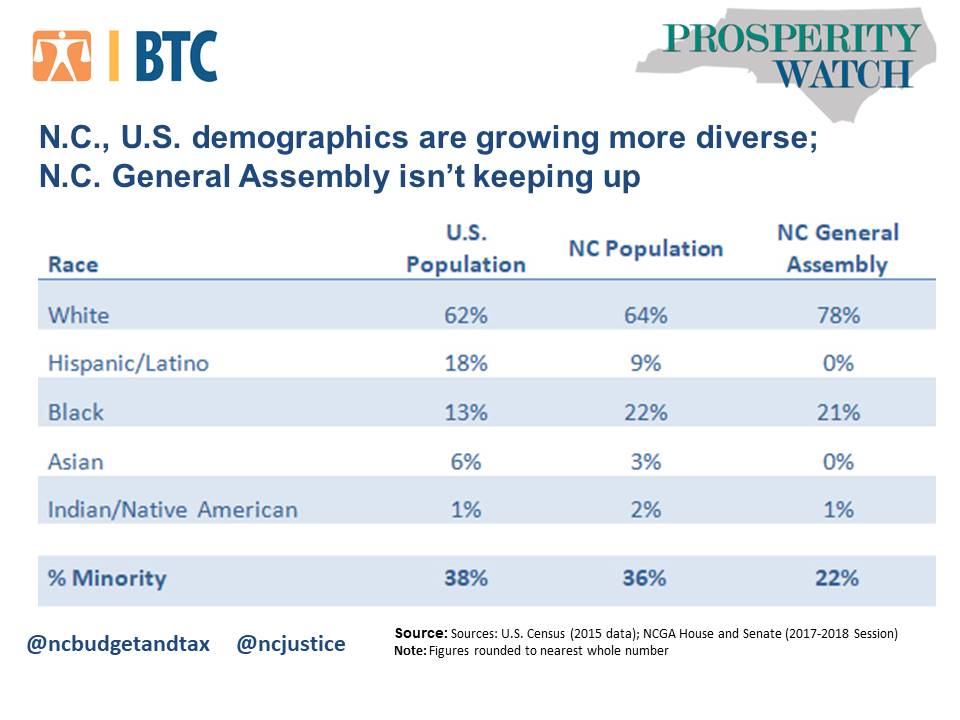Prosperity Watch (Issue 76, No. 1)
July 10, 2017
A review of our state’s demographics shows North Carolina is a growing and diverse state. This is great news for our state, considering decades of research have shown that being around people who are different from us makes us more creative, more diligent and harder-working. Unfortunately, statistics also show that NC’s General Assembly is less diverse than both the U.S. and NC general population, as only 22 percent of its body is composed of minorities, compared to U.S (38 percent) and NC (36 percent) populations. This is of serious concern, considering that the terms of democratic representation and voting rights are currently being legislated to limit rather than expand participation.
In 1790, the first U.S. census found that America’s population stood at 3.8 million and that North Carolina’s population was 393,751. Today, the U.S. population stands at 325.3 million, while NC’s population is 10.1 million. In North Carolina, Latinos represent 9 percent of the state’s population and Asians 3 percent. These represent half for the share each group represents in the U.S. population overall, respectively 18 percent and 6 percent. The current percentage of African Americans (22 percent) and American Indian/Native Americans (2 percent) in NC is higher compared to the the general population in the U.S., respectively 13 percent and 1 percent.
The strength of our economy and democracy is highly dependent on how equitably opportunity and representation are available to all North Carolinians and Americans, regardless of race or ethnicity. An elected government that represents everyone can only lead to a stronger state and nation.
 Justice Circle
Justice Circle 
